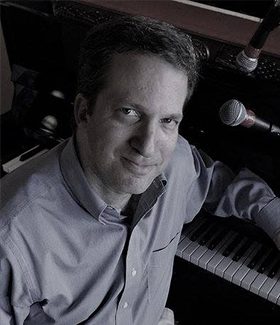Chiropractic, Physicians, Scientology All Clash in New True Legal Thriller
Howard Wolinsky is a veteran Chicago medical reporter, and he’s spent the past 40 years tracking the tale of a lifetime.
His new book, “Contain and Eliminate,” tells the stunning, sprawling true story of how chiropractors – with the help of a Clinton, Iowa native and prominent Chicago patent attorney – took on the powerful American Medical Association (AMA), and triumphed in court.
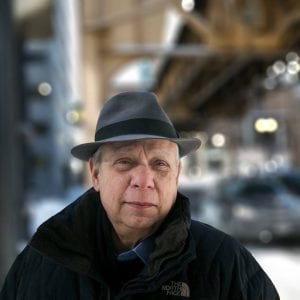
Howard Wolinsky, 73, wrote for the Chicago Sun-Times for 27 years.
The father of the attorney, George McAndrews, was a chiropractor in Clinton who the local MDs called a quack. George never forgot that, and his brother, Jerry McAndrews, was the former head of Palmer College of Chiropractic in Davenport, where Daniel David (D.D.) Palmer founded the practice in 1895. The college is the largest chiropractic school in the U.S.
Wolinsky, now 73, started with the case Dec. 8, 1980, when he worked at American Medical News, the weekly newspaper of the American Medical Association, based in downtown Chicago.
He covered the antitrust suit brought by Chicago chiropractor Chester Wilk and four other chiropractors against the AMA and a who’s who of the nation’s medical establishment — the American Hospital Association, the American Academy of Radiology, the American College of Surgeons, the American College of Physicians, the Joint Commission on Accreditation of Hospitals, and others.
The case, Wilk et al. v. AMA et al., had been filed in 1976. For chiropractic, “the suit was a critical test that would decide whether the upstart profession, launched in 1895, had the unhindered right to compete for patients with members of the AMA, medical doctors who claimed ancestry dating back 2,500 years,” Wolinsky wrote.
“It was sheer luck,” Wolinsky said this week of his start with the groundbreaking case. “I just landed in a courtroom because there was nobody else around to cover it, then I stuck with it.”

Wolinsky started covering the Wilk case in 1980.
While the chiropractors lost the first trial, due to erroneous instructions to the jury, they later prevailed in a bench trial, in a 1987 ruling by Judge Susan Getzendanner – the first woman appointed as a federal judge for the Northern District of Illinois.
She ruled the AMA led an effort to destroy the chiropractic profession by depriving its practitioners of association with medical doctors and by calling them “unscientific cultists” or worse. She described the conspiracy as “systematic, long-term wrongdoing and the long-term intent to destroy a licensed profession.” Getzendanner’s decision said the AMA intended “to contain and eliminate the chiropractic profession,” from which Wolinsky named his new book.
Chiropractic is a method of treatment based on the theory that disease is caused by interference with nerve function, which practitioners try to correct by manipulating the spine and other joints. Chiropractors also provide a host of other health services.
Judge Getzendanner said the function of the AMA’s Committee on Quackery formed in 1962 (later disbanded) was to destroy the chiropractic profession.
In 1987, the judge wrote that the chiropractors wanted “a judicial pronouncement that chiropractic is a valid, efficacious, even scientific health care service. I believe that the answer to that question can only be provided by a well-designed, controlled, scientific study… No such study has ever been done. In the absence of such a study, the court is left to decide the issue on the basis of largely anecdotal evidence. I decline to pronounce chiropractic valid or invalid on anecdotal evidence.”

Wolinsky co-authored a 1994 book about AMA scandals.
Paul E. Slater, former professor of antitrust law at Northwestern University’s law school and co-counsel for the Wilk plaintiffs, wrote of Wolinsky’s book:
“ ‘Contain and Eliminate’ tells the improbable tale of one man’s quest to force some of America’s most powerful institutions to comply with the law. George McAndrews, an accomplished patent attorney, stepped out of his field of expertise and with a small, out-gunned band of lawyers launched an antitrust war against the AMA and most of organized medicine.
“The goal was not monetary,” Slater said. “It was simply to force the AMA to terminate its avowed campaign to destroy the entire chiropractic profession. Throughout the 14-year battle, McAndrews managed to keep his sense of humor and his Midwestern grace. When asked on the first day of trial how his team of four would contend with the 50-defense counsel in the courtroom, he answered simply: ‘We will surround them and attack from all sides at once.’
“The story is skillfully told by Howard Wolinsky, who paints a vivid picture of the outsized personalities who played out the legal drama,” he wrote. The case dragged on until 1990, when appeals to the U.S. Supreme Court were exhausted, and the high court declined to intervene.
Wolinsky worked as a health and science reporter for the Chicago Sun-Times from 1981 to 2008, and with fellow reporter Tom Brune did exposés that led to the firing of the AMA chief executive and several other executives in 1989 and 1990 for financial indiscretions and ethical breaches. The two reporters partnered on a 1994 book, “The Serpent on the Staff: The Unhealthy Politics of the American Medical Association,” but just one chapter covered the AMA plot against chiropractic.
Re-examining the issue in 2018
In January 2018, Wolinsky got a call out of the blue from “The Voice of Irish Doom,” George McAndrews. He asked if he would talk with a friend of his, a prominent Pennsylvania chiropractor named Louis Sportelli (a Palmer College alum).
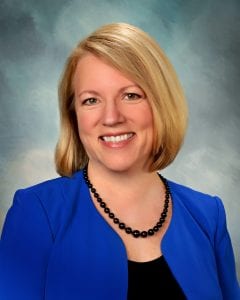
Christine Goertz was vice chancellor at Palmer College for 11 years.
Wolinsky said he “needed someone to write a book about the Wilk case, not a dry academic tome, but more of a thriller,” the author writes in “Contain and Eliminate.” “He told me he didn’t want ‘a dry historical account of the Wilk v. AMA litigation but rather an accurate, suspenseful, intriguing, compelling novel . . . like The Hunt for Red October.’ He wanted me to tell a new audience about the nearly forgotten case of Wilk et al. v. AMA et al.”
“My goal was to write a page-turner about the Wilk case,” Wolinsky wrote, which he clearly did. “I found plenty of suspense as I dug out what happened from over a hundred interviews, including George McAndrews and his family; Dr. Chester Wilk and many leading figures from the chiropractic world; a couple from the AMA side of things; and so many others.”
The story — much of it never before documented – features amazing sabotage of AMA offices by Scientologists; the wealth of proof of an AMA plot they presented as an anonymous gift to the chiropractors; “the two federal David and Goliath trials that ensued; and, finally, the unflinching actions of George McAndrews, the chiropractors’ secret weapon,” Wolinsky wrote.
“This book, while clearly written from the perspective of chiropractic, is not an attempt to justify chiropractic or to validate it as an efficacious, scientific health care service. That is for others to determine. Rather, Contain and Eliminate is the story of the events that climaxed with an injunction issued by Judge Susan Getzendanner that enjoined the AMA from pursuing an illegal boycott of chiropractors.
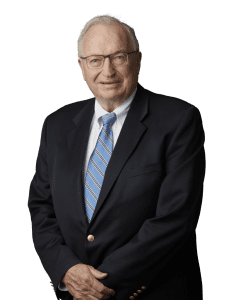
George McAndrews grew up in Clinton, Iowa, son of a chiropractor.
“It is a tale of an ugly professional turf battle. It is the story of how the AMA, illegally, tried to crush a small group of practitioners that it perceived as a commercial competitor to medical doctors — ‘to keep [chiropractors] from operating freely in the marketplace,’ said Judge Getzendanner. The book recounts how chiropractors, against all odds, stood their ground.”
Wolinsky said that Dr. Sportelli personally financed the self-published book – raising funds from chiropractors across the country. The author was promised editorial freedom.
“I’m sure they might have preferred that the Church of Scientology wouldn’t have been as much of the back story,” Wolinsky said. “So I spent about two years researching and writing. I interviewed over 100 people and traveled to Palmer/Davenport and Clinton, Iowa.”
In the early decades of the 20th century, like today, medical doctors were mostly at a loss to relieve the agonies of back pain. “Yet they sniffed at the chiropractors as fraudulent,” Wolinsky wrote. “The farmers, on the other hand, were impressed. As word of mouth spread of this unique treatment, more farmers sought relief. Despite the professional disparagement, tractor back led many patients to Dr. McAndrews.”
A half a century later, “the irony of all this was not lost on George McAndrews, who, as an attorney, would seek his personal form of retribution on those who had disparaged his father,” the book says. “He knew how cruel the effects of professional discrimination could be. He had seen firsthand much of the arrogance of the medical profession toward his father.”
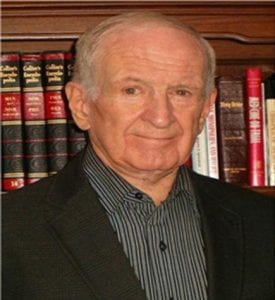
Chicago chiropractor Chester Wilk brought his original lawsuit in 1976.
“But medical doctors could exact penalties if patients consulted a chiropractor,” Wolinsky wrote. “Patients would tell his father that their medical doctors would not allow them to seek or use chiropractic. MDs would even turn patients away for consulting with ‘quacks.’ A generation later, this formal shunning of chiropractors as ‘unscientific cultists,’ espoused by the American Medical Association’s Council of Judicial Affairs and its Committee on Quackery, was declared in federal court to be an illegal boycott in restraint of trade.”
George’s brother Jerry (who died in 2006) was a chiro, a Palmer grad and served as Palmer president from 1979 to 1987, and his sister Virginia was a chiropractor in Clinton, Iowa.
Wolinsky’s new book includes interviews with George, now 85, Chester Wilk, now 90, and Judge Getzendanner, now 80.
“They say that truth is stranger than fiction. Well, this book must be the truth because it is so strange,” wrote Jason Young, D.C., at-large director of the National Board of Chiropractic Examiners. “The book literally made me laugh out loud as I read about covert ops run by ‘Sore Throat’ and the Church of Scientology against the American Medical Association.
“I cheered for attorney George McAndrews, a small-town hero with a vendetta to settle. I was inspired by the courage and perseverance of chiropractors who dared to stand up to impossible odds,” Young said. “The story is outrageous but important for every chiropractor to understand and appreciate how far we’ve come.”
Scientologists and the legend of “Sore Throat”
Shortly after the 1974 resignation of President Nixon (after the Watergate scandal, the Washington Post’s anonymous “Deep Throat” source, impeachment hearings), another brouhaha threatened to take down the rich and powerful.

Retired Judge Susan Getzendanner, in her Chicago home.
It began with large brown envelopes that arrived anonymously with a thump in the newsrooms at the National Press Building, in 1975, Wolinsky wrote. They were stuffed with copies of confidential letters and memos that exposed questionable behavior by the nation’s largest medical group. The documents spelled out sweetheart pacts with the pharmaceutical industry, inside deals with Congressional leaders, secret covenants with the Nixon White House, and other political dirty laundry.
The reporters referred to the anonymous source of the AMA material as “Sore Throat” (a twist on Watergate’s Deep Throat). In turn, the source described himself as a disillusioned former physician on the staff of the AMA, but he was really a spy within Scientology, Wolinsky said.
Although exposure of the AMA’s anti-chiropractic plot eventually came to be the AMA’s biggest headache, helping chiropractic was never the ultimate objective for the Scientologists, he wrote. “It was merely a means to an end, and that end was to hurt the AMA, which the Scientologists despised. So Sore Throat’s attacks in the summer and fall of 1975 were productive for the Scientologists and troublesome for the AMA — even before the chiropractic world got wind of the full implications of the AMA’s illegal boycott of chiropractic.”
The cult-like Scientologists acted on the belief that the AMA was plotting against the church. So the resourceful Scientologists began spying

Palmer College of Chiropractic in Davenport is named for its founder, Daniel David Palmer.
on AMA operations, both at its Chicago headquarters and its Washington lobbying offices.
What the Scientologists found hidden in the AMA file cabinets was an eye-opener. There was indeed an AMA plot. But the moles inadvertently discovered that Scientology was not the main target of the AMA’s plotting; it was the chiropractors, Wolinsky wrote.
Iowa had the largest proportion of chiropractors to MDs, like 1 to 4, and the Iowa State Medical Society had viewed chiros as an economic threat, he said. General counsel Robert Throckmorton came up with a plan in the 1950s to “contain and eliminate” chiropractors, and the AMA saw his presentation, hiring him to the association.
Of course, the AMA did not characterize its anti-chiropractic campaign as a malevolent conspiracy (although some members, particularly in

Palmer is celebrating 125 years of chiropractic this year.
chiropractor-heavy Iowa, recognized its primary purpose for what it was, an anticompetitive boycott), Wolinsky wrote.
“To many medical doctors, the AMA was conducting a righteous crusade. Many medical doctors were and remain genuinely skeptical of chiropractic’s benefit, citing a lack of reproducibility and lack of proof of a scientific mechanism. So the AMA justified its chiropractic inquisition as devoted solely to the protection of the public’s health and welfare.”
“Yet it was still a minor miracle that George McAndrews ever made it to court to pit his handful of angry chiropractor clients against the prodigious muscle of the American Medical Association, plus its assorted sycophants,” the author wrote. “A less dedicated man might have waved a white flag in the face of a maelstrom of extraneous forces arrayed against him in the pursuit of redress from an illegal boycott. Wherever he looked, trouble brewed.”
It was an antitrust case because of the AMA’s effort “to deny chiropractors access to hospitals and insurance reimbursement, the ability to refer and utilize medical facilities for diagnostic and clinical care, constituted an egregious abuse of power by a competing trade association,” Wolinsky wrote.
The suit’s legacy
Wolinsky interviewed former Palmer exec Christine Goertz for the book, who has bridged the chasm between chiropractic and physicians as a high-level researcher and administrator. While there are an estimated 70,000 chiropractors in the U.S. (including about 2,600 in Iowa and Illinois), there are over 950,000 physicians.

Palmer is the largest chiropractic school in the nation.
Goertz has had more than a 25-year career dedicated to research on chiropractic, including 11 years as vice chancellor of research and health policy at Palmer College of Chiropractic, before she left in 2018.
She’s worked with multi-disciplinary teams to design and implement studies aimed at increasing knowledge about the effectiveness and cost of complementary and integrative healthcare delivery. Dr. Goertz is a Professor in Musculoskeletal Research and the Director of System Development and Coordination for Spine Health at Duke University Medical School in the Department of Orthopaedic Surgery.
Prior to joining Duke, she was (and still is) the CEO of the Spine Institute for Quality, a nonprofit devoted to improving quality, demonstrating value, and building trust in spine care delivery.
Goertz also ran the nation’s largest chiropractic research project in the country at Palmer and was a researcher for several years at the National Institutes of Health. “All these accomplishments were unimaginable when the Getzendanner decision was let stand by the U.S. Supreme Court in 1990,” Wolinsky wrote.
“The Wilk case cleared the way for Goertz’s unusual career and research,” he wrote, noting she said the case was a game-changer for
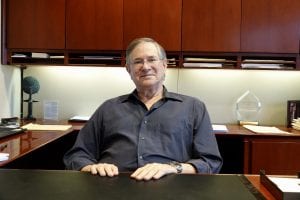
Paul Slater, the co-counsel for the Wilk plaintiffs, taught antitrust law at Northwestern.
chiropractic researchers. “I think it made a difference in terms of research opportunities, but also opportunities for doctors of chiropractic to be more integrated with medical care,” she said.
Before Wilk, there was no federal funding of research on chiropractic, Wolinsky said.
Academics debate whether the Wilk case had a direct impact on the availability of federal grant funding of research on chiropractic. They attribute the flow in funding to the creation of the federal Office of Alternative Medicine in 1992, two years after the Supreme Court decision in Wilk, through the leadership of U.S. Senator Tom Harkin, of Iowa, who believed alternative medicine helped cure his allergies, Wolinsky wrote.
The suit had “had an impact, but it was not a cure-all,” Wolinsky said recently, noting George McAndrews’ daughter is a chiro in north suburban Chicago. “She gets references from doctors in the sports medicine program at Rush Medical Center – St. Luke’s. But some of the family physicians and emergency room physicians in her town reject her X-rays or won’t do X-rays for her. A lot of things are better, but a lot of things haven’t changed.”
“Having covered the trial, I went to see a chiropractor for the first time,” Wolinsky said. “I had horrible neck issues, since I was 20 years old. The MDs could do nothing. I got relief from it. I’m not the poster boy for chiropractic treatment.”
“I tried as hard as I could to be objective and balanced,” he added. “A chiropractor asked me, you seem to think George McAndrews is a hero. Well, every book needs a hero and a villain, and we’ve got a couple of each. George is the main hero of the book – he made it happen. Chester Wilk made it happen.”

Pennsylvania chiropractor Lou Sportelli (who’s headed national chiropractic groups) inspired and funded the new book’s publication.
McAndrews himself wrote in the epilogue:
“Contain and Eliminate is about the seemingly incomprehensible, implausible, illegal, clandestine, and disgraceful activities of the American Medical Association. My task, as the attorney in Wilk et al. v. the AMA et al., was to sue the largest, most respected medical organization in the world, and to prove that they conspired to contain and eliminate the chiropractic profession.
“The challenge was formidable, and I had no delusions about the monumental assignment I had agreed to accept. Having grown up a youngster in a small town in Iowa, hearing disparaging epithets of ‘quack’ hurled at my father, and having seen firsthand, but not really fully understanding, the impact of the not-so-subtle ostracizing of an entire profession, I felt an intimate and compelling reason to become involved,” he wrote.
“This book was written to memorialize an important legal case in the healthcare arena, and also to recognize the heroic efforts of many whose names were relevant and significant in forging this epic battle,” McAndrews wrote. “Many of them are no longer with us and will unfortunately never see this epic story told, or history unfold.”
The attorney places much blame for the opioid overdose crisis (which caused nearly 450,000 U.S. deaths from 1999-2018) on the AMA’s opposition to doctors of chiropractic in treating pain.
McAndrews hopes the book offers “some aspect of enlightenment on the benefits of a profession which has survived 125 years as a non-drug, non-surgical accompaniment to a healthcare system now recognizing a non-pharmaceutical approach in an opioid crisis in our nation.”
Wolinsky quotes Wilk in saying: “There is a greater awareness of the merits of chiropractic. There are certainly chiropractors in hospitals. There is greater interprofessional cooperation. Chiropractic has improved its education, and more people are seeing chiropractors,” he said.
At the industry news site, DynamicChiropractic.com, Sportelli wrote: “ ‘Contain and Eliminate’ is a story that needs to be told not for revenge but for restoration and rehabilitation to the image of chiropractic which was disparaged and destroyed resulting in millions of patients who would never seek the services of a doctor of chiropractic because the image of the profession was so tarnished by the activities of the American Medical Association.”
The book is available for sale at $34.99 or $59 for two copies (pre-publication price until Dec. 31), at http://containandeliminate.com/. Proceeds will be donated to the Foundation for Chiropractic Progress, the NCMIC Foundation and the Association for the History of Chiropractic.


